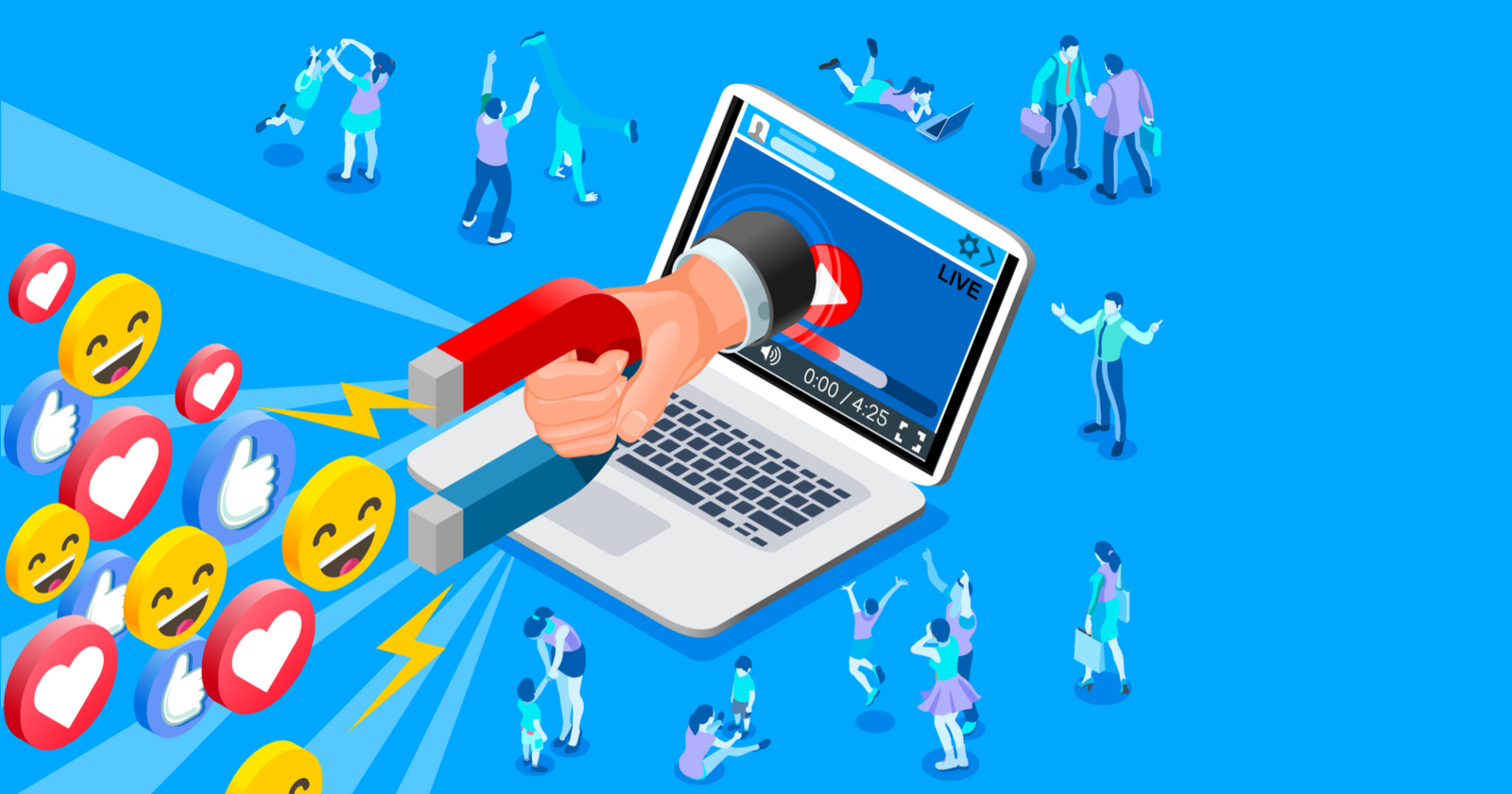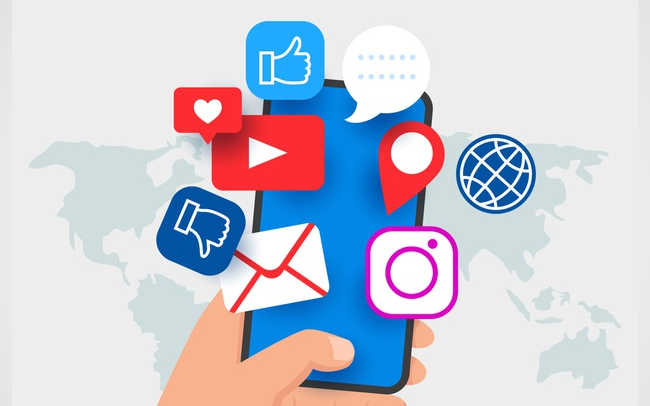Hello!
Unless you’ve been living under a rock for the better part of a year, you’ve probably been hearing a lot about AI – artificial intelligence – in the world today.
 AI image tools like Midjourney and DALL-E have been letting people generate intriguing images, while AI text generators like ChatGPT have been helping people find places to eat or organize their fantasy worlds.
AI image tools like Midjourney and DALL-E have been letting people generate intriguing images, while AI text generators like ChatGPT have been helping people find places to eat or organize their fantasy worlds.
But these are just some of the fun uses for AI platforms, the sort that can be used for play as well as work. There are plenty of other AI tools that harness the power of machine learning to help businesses succeed in their marketing goals. In this blog, let’s look at how businesses like yours can use AI for lead generation.
Lead generation can be something of a puzzle for businesses – the fundamental question of “how do you get people to want to give you money” is the core question of any brand, and the brand that can truly solve that problem will conquer the world. AI might not be a magician’s wand that can solve the issue for good, but in some ways, it’s not far off.
So, let’s put on our top hats, show that there’s nothing up our sleeves, and explore the world of AI-powered lead generation.
Abracadabra!
Why Is AI for Lead Generation So Effective?
 What makes it worthwhile to use AI tools for lead generation? Broadly speaking, there are two main reasons: Unlike your pesky human marketers with their mortal flesh-and-blood bodies, AI tools don’t need to sleep or take lunch breaks, so they can work around the clock. AI also brings a level of sophistication and efficiency that humans can’t easily match, noting easily missable pieces of information and putting them in context.
What makes it worthwhile to use AI tools for lead generation? Broadly speaking, there are two main reasons: Unlike your pesky human marketers with their mortal flesh-and-blood bodies, AI tools don’t need to sleep or take lunch breaks, so they can work around the clock. AI also brings a level of sophistication and efficiency that humans can’t easily match, noting easily missable pieces of information and putting them in context.
(That said, an overreliance on AI is not necessarily the best solution either, but we’ll discuss that a little later in this post.)
Here are some of the ways that AI tools for lead generation can work their magic:
Predictive Lead Scoring
Which leads are more likely to convert into paying customers? That’s the historic challenge for sales teams, and it’s one that AI is well suited to tackle. By analyzing historical data and user behavior, AI tools can assign a lead score to each prospect, helping you prioritize your efforts on the most likely leads.
One great example of this is Salesforce Einstein, which uses AI to predict lead scores based on factors like past interactions, email engagement, and website visits. This lets sales teams focus on leads with the biggest conversion potential.
Personalized Content Recommendations
 Have you ever finished a show on Netflix and then found, in your recommended videos queue, the perfect show for you? Something that you’d never heard of before, but which seemed perfectly tailored to your tastes – like it was made just for you?
Have you ever finished a show on Netflix and then found, in your recommended videos queue, the perfect show for you? Something that you’d never heard of before, but which seemed perfectly tailored to your tastes – like it was made just for you?
Well, it probably wasn’t. But Netflix, the king of content personalization online, is extremely good at using AI to recommend movies and TV shows to viewers who it thinks will enjoy them.
This can also work for your marketing. AI understands your leads’ preferences and behavior, and can serve up personalized content from your blog, podcast, or video channel. This increases engagement and also nurtures leads along the sales funnel.
HubSpot has AI tools that can recommend things like blog posts, ebooks, and webinars based on a visitor’s interests and browsing history. So, even if you aren’t putting out high-budget TV shows like Netflix does, you can take advantage of this sort of AI tool for lead generation.
Chatbots and Conversational AI
Having a personalized sales rep able to greet visitors to your site and find what they’re into would be great for just about every business, but you can’t afford to pay staff to be on call 24/7, right?
Well, that’s where chatbots powered by conversational AI come in. While they don’t have the complete flexibility a real human would have, they can answer questions, provide assistance, and capture lead information.
 Conversational AI tools help you engage with leads in real time, potentially qualifying them for follow-up by your sales team.
Conversational AI tools help you engage with leads in real time, potentially qualifying them for follow-up by your sales team.
For example, take Driftbot, the AI-powered chatbot by Drift, which can engage website visitors, qualify leads, and schedule meetings, all in the process of a near-human conversation.
Again, we’re not yet to the point where we can upload marketers and sales teams into computers, turning them into glorious cyborgs who never have to eat nor sleep, but this is close.
(we can’t be the only one who looks forward to having a perfect machine body, right? Just me? Anyone? Okay.)
Data Enrichment
So, you’ve captured a name and an email address from one of your other lead-generation sources. AI-driven data enrichment tools can help you append valuable details to your leads’ profiles, such as company size, industry, and job role. This makes it much easier to segment and target your audience effectively, especially for things like account-based marketing.
When you have more data – and more accurate data that’s more visible and targeted at the right accounts – you can better generate leads.
Clearbit is an AI data enrichment tool that enriches lead data with information from over 250 data sources, for example. This can be a real game changer for sales teams that are looking to tailor their outreach.
Predictive Analytics
Which leads are more likely to convert than others? Which of your clients are in danger of churn? AI algorithms don’t just help lead generation, they can help your business across the board. By analyzing past lead behavior, predictive analytics can produce insights that guide all future sales and marketing efforts.
One great example of a predictive analytics AI tool for lead generation is InsideSales’ Playbooks, which uses AI to identify patterns in successful sales calls.
Email Marketing Optimization
 If you’re anything like me, you get roughly a billion emails every day. You almost certainly don’t read all of them, just clicking the “mark all as read” button after scanning through your inbox. AI can help break out of that rut. AI can help you craft compelling subject lines, fine-tune your send times for maximum engagement, or even suggest content that resonates with your leads.
If you’re anything like me, you get roughly a billion emails every day. You almost certainly don’t read all of them, just clicking the “mark all as read” button after scanning through your inbox. AI can help break out of that rut. AI can help you craft compelling subject lines, fine-tune your send times for maximum engagement, or even suggest content that resonates with your leads.
Imagine if you could combine AI email tools with personalized content tools to send your leads a digest custom-tailored to their interests to get them to engage further with your brand. Wouldn’t that be effective?
If you’re looking into AI tools for email optimization, look into Outreach.io. This tool helps sales teams personalize email sequences, schedule follow-ups, and prioritize leads based on recipient behavior.
Account-Based Marketing (ABM)
For B2B marketers, one of the most time-consuming – but potentially rewarding – strategies is ABM, or account-based marketing. In ABM, you can target high-value accounts with personalized outreach using platforms like LinkedIn.
AI can help you identify the ideal accounts to target, can automate the first steps of outreach, and can help you customize content at scale. (For bonus points, consider teaming up with an experienced ABM agency that offers top-notch LinkedIn marketing services – they’ll help you get the most out of your AI tools.)
A leading example of AI-driven ABM solutions is Demandbase, which leverages AI to target accounts and personalized website experiences for key stakeholders.
AI-Powered Content Creation
 In previous blogs, I’ve expressed skepticism that it’s good practice for brands to just turn to ChatGPT (or whatever other AI text generator) and tell it, “right, write me a full 2000-word blog on the benefits of the IoT in warehouse management” or whatever topic you wish.
In previous blogs, I’ve expressed skepticism that it’s good practice for brands to just turn to ChatGPT (or whatever other AI text generator) and tell it, “right, write me a full 2000-word blog on the benefits of the IoT in warehouse management” or whatever topic you wish.
Not only will it fail to have the genuine insights a human being could, but your competitors might be doing the same thing – leaving you all with nothing to differentiate your brand from the others.
But that doesn’t mean that AI content creation is pointless. Far from it! You can use AI like Grammarly to check your blog for grammar or better word choices, and sites like ChatGPT can be great for brainstorming ideas.
But at the end of the day, if you want your brand to set itself apart from the competition, relying solely on AI tools for content creation is a failure – there’s gotta be a personal touch.
Best Practices for Using AI to Generate Leads
If it were as simple as signing up for one of these apps and going “all right, get me customers,” then using these tools would be a no-brainer. However, while these are advanced tools, they’re still just that – tools. There’s a right way to use them, and a wrong way.
 Here are some of the best practices to keep in mind when using AI for lead generation:
Here are some of the best practices to keep in mind when using AI for lead generation:
- Data quality matters. “Garbage in, garbage out” holds true here as it does anywhere else. Ensure your data is clean and accurate before feeding it into your AI tools. Since AI tools are so data-dependent, maintaining high-quality, up-to-date customer and lead information is critical. Invest in data cleansing and enrichment tools, if possible.
- Select the right AI tools. Should you just click on every link in this blog and sign up for their service? No, of course not. You need to use the right tool for the right job. If you’re not expanding into content marketing or writing email followups to leads, then services designed to personalize content plans or optimize your email marketing won’t really help you.
- Define clear objectives and goals. This is true about any marketing strategy, really, but it’s all the more important when you’re leaving much of your marketing to AI. Right now, you need to have goals like “have X qualified leads every month,” or “increase my conversion rates by Y%.”
- Train, train, train. I’m not talking about Thomas the Tank Engine. I’m talking about training your employees on the tools you’re adopting. How many neat features do you think these platforms have that you’re paying for but not using because you’ve never taught your employees that they exist? If you’re using AI for tasks like lead scoring, you need to ensure your sales team is trained enough to know how to best use the information they’re given.
- Don’t neglect ethics. Data privacy is going to be bigger than ever in the coming years. Using AI unethically to give your business a quick advantage can maybe get you some paying clients, but you could pay for it in lawsuits, fines, or worse. Be transparent with your leads about how you use AI. Obtain consent for data collection and ensure compliance with data protection regulations like the GDPR.
- Create positive feedback loops. Ideally, sales and marketing should be like a Mobius strip or an infinity symbol – a consistent loop where data and insights from the front lines are used to refine AI models and improve lead quality. Marketing gives Sales AI-driven insights, Sales reports back with how effective those insights are, and Marketing adjusts accordingly.
- Seriously, use human oversight. A real human, at the end of the day, should be the one making decisions based on the data at hand. Trusting your entire marketing strategy to some random business’ algorithm is a great way to wind up with egg on your face.
- Avoid learning the wrong lessons. What does this mean? Well, that’s a great question. In fact, I think I should expand on it with its own section.
AI Pitfalls: How to Avoid Learning the Wrong Lessons
 The other day, over morning coffee, I saw this rather interesting post on Twitterabout a coffee shop using AI to measure the productivity of their employees by tracking the number of cups of coffee served.
The other day, over morning coffee, I saw this rather interesting post on Twitterabout a coffee shop using AI to measure the productivity of their employees by tracking the number of cups of coffee served.
The post pointed out that this sort of data risked giving managers a “distorted view of individual productivity” that could make management – and the store as a whole – worse.
For instance, as the original poster (and others in the comments) pointed out, a performance metric of “how many cups of coffee are you making” is a strong incentive against taking time to clean the bathroom, or carefully taking time to fully clean tables.
It rewards employees who take simple drink orders and penalizes those who take more complex orders that the shop can upsell and make more profitable.
A barista who ensures the customer experience is pleasant and as a result converts them into a regular visitor might be scored more poorly by this algorithm, despite doing more to drum up repeat business.
 To sum up: Poor use of AI can give you the wrong lessons, even with accurate data. Here are some pitfalls you should be careful to avoid.
To sum up: Poor use of AI can give you the wrong lessons, even with accurate data. Here are some pitfalls you should be careful to avoid.
- Overemphasizing quantity over quality. AI can help your team crank out leads at an impressive rate, but if it isn’t properly configured, it might risk going for quantity over quality – giving your team a flood of leads that don’t actually align with your ICPs.
- Algorithmic bias. AI algorithms are only as good as the data they’re trained on. If there are any biases in the training data, the AI may perpetuate these biases in lead generation. At best, this might be less efficient – at worse, you could wind up with discriminatory or exclusionary practices that harm your reputation and your relationships with your clients.
- False positives. AI might generate false positives, flagging individuals who aren’t genuinely interested in a product or service. It might misinterpret certain online behaviors, like someone who was browsing for fun or conducting research without purchase intent, which can lead to your sales reps investing time and resources into unlikely-to-convert leads.
- Content repetition. You might be able to get away with one or two posts completely written by AI. Overusing AI-generated content can make marketing materials feel generic or robotic – and when your prospective customers figure out that there’s no actual insights being presented and all they’re reading is AI-generated slop, they’ll be significantly less likely to engage with your brand.
- Ignoring human interaction. At some point, your AI chatbot needs to feed the lead to an actual human being. AI can automate many aspects of lead generation, but it should complement human efforts, not replace them entirely.
- Neglecting long-term relationship building. AI can excel at short-term lead conversion and immediate prospects, but it isn’t equipped to nurture and maintain long-term customer relationships. This is less about using AI for lead generation and more about keeping extant customers satisfied, but the two are closely related. Neglecting this can result in a revolving door of customers who churn and don’t stick around.
Also read:
- How to Ensure Efficient Software Development Production
- How to Keep Yourself Safe When Using Tinder
- How does Online Fraud happen when Requesting a Loan?
- 5 Technological Advancements That Will Change the Human Perception by 2025
Conclusion
 AI is not a replacement for human ingenuity. It is a powerful ally that can help marketing and sales teams work smarter rather than harder.
AI is not a replacement for human ingenuity. It is a powerful ally that can help marketing and sales teams work smarter rather than harder.
Embracing AI tools for lead generation can help your team unlock the potential to attract, nurture, and convert leads with greater efficiency and precision than before.
Thank you!
Join us on social media!
See you!






